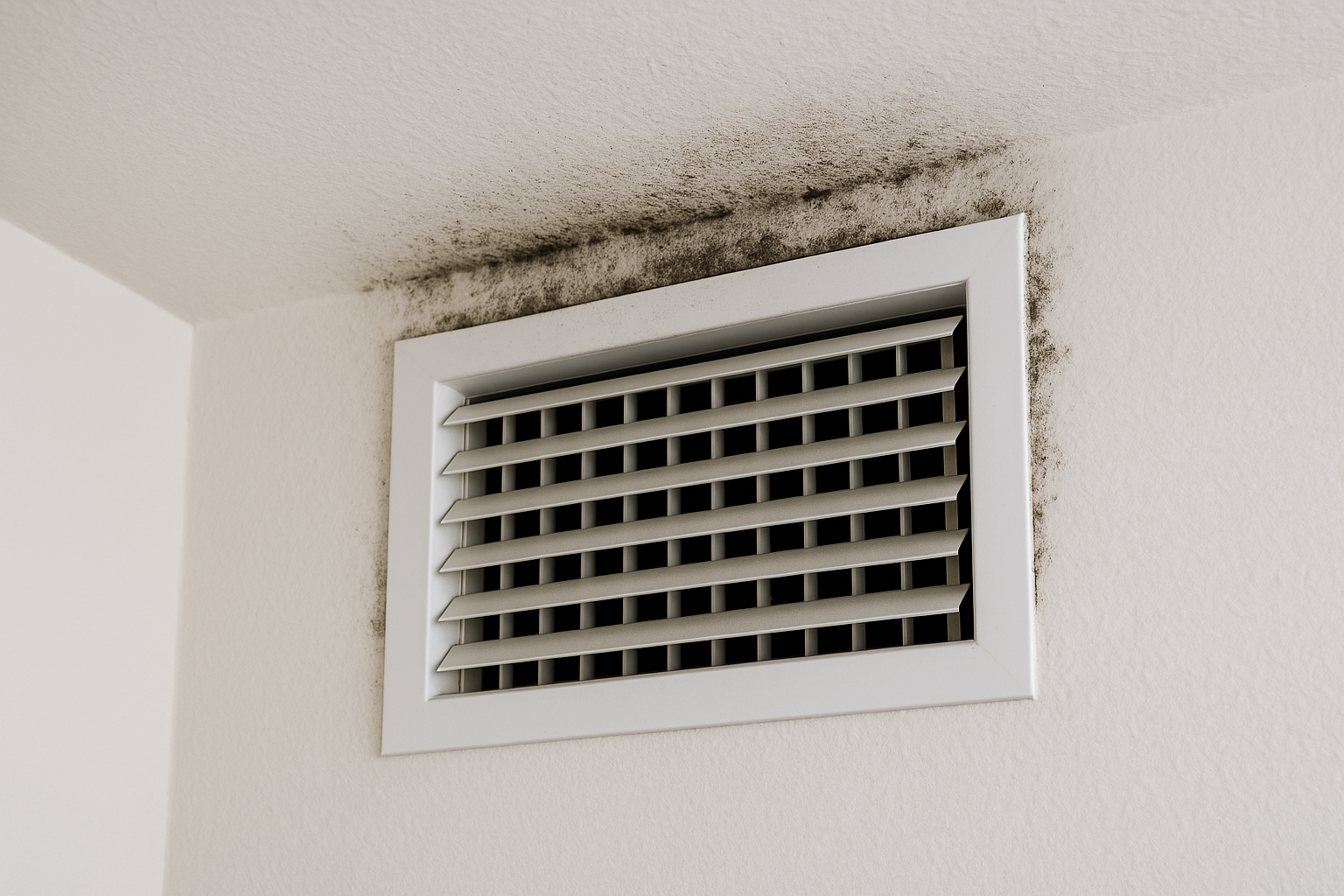Mold Around HVAC Supply Registers: Causes & Cleanup
Finding dark spots or fuzzy patches around your HVAC supply registers can be alarming for any homeowner. These suspect mold growths not only affect indoor air quality but also signal potential issues with your HVAC system and indoor environment. At NTX Enviro, we frequently inspect and test for mold in HVAC systems across North Texas, and we want to share some insights into why this happens—and what you can do about it.
Common Causes of Mold Around Supply Registers
Excess Moisture and Humidity
Mold requires moisture to grow. High indoor humidity levels (above 60%) or condensation from cold air hitting warm, humid surfaces can create the perfect conditions for mold growth on and around vents.Dirty or Clogged Air Filters
When filters aren’t changed regularly, dust and organic debris accumulate in the ductwork and registers. This debris provides a food source for mold spores.Leaky or Poorly Insulated Ductwork
Air leaks or lack of insulation can cause temperature differences that result in condensation inside ducts and around registers.Oversized HVAC System
An HVAC system that cools the house too quickly may not run long enough to remove humidity, leaving excess moisture in the air.Poor Ventilation
Inadequate air circulation allows stagnant, humid air to linger in certain rooms, especially bathrooms and kitchens, contributing to localized mold growth.
Preventative Maintenance Measures
Taking proactive steps can drastically reduce the risk of mold growth in and around your HVAC system:
Change Filters Regularly: Replace filters every 1-3 months, depending on system use and household conditions.
Maintain Indoor Humidity: Keep indoor relative humidity between 30-50%. Use a dehumidifier in damp areas if needed.
Schedule Annual HVAC Maintenance: Have a licensed professional inspect and service your system to ensure efficiency and cleanliness.
Seal and Insulate Ductwork: Prevent condensation by ensuring ducts are properly sealed and insulated, especially in attics and crawl spaces.
Improve Ventilation: Use exhaust fans in kitchens and bathrooms to reduce moisture accumulation.
Check for Water Leaks: Regularly inspect your home for plumbing leaks or roof leaks that may contribute to hidden moisture issues.
Cleanup Guidelines if Mold is Found
If you notice visible mold near HVAC registers, here are safe steps to take:
Do Not Ignore It
Even small patches can indicate a bigger problem inside the ducts or system.Surface Cleaning
For small, localized areas on the registers themselves, clean with a detergent solution and allow the surface to dry completely. Avoid bleach, as it does not prevent regrowth.Replace Contaminated Filters
Immediately remove and replace air filters that show signs of mold or heavy dust buildup.Do Not Attempt DIY Duct Cleaning
Mold inside ducts requires professional remediation. Disturbing growth without proper containment and filtration can spread spores throughout your home.Schedule a Professional Mold Assessment
Contact a licensed Mold Testing specialist to inspect, test, and provide guidance on remediation if necessary. NTX Enviro specializes in identifying the source of mold problems and offering comprehensive Mold Inspections for North Texas homeowners.
Final Thoughts
Mold around HVAC supply registers is often a symptom of excess humidity, poor filtration, or ductwork issues. While surface cleaning can help temporarily, preventing regrowth requires addressing the underlying cause. Routine maintenance, humidity control, and professional inspection are the best defenses against mold spreading through your HVAC system.
If you’ve noticed suspect mold growth around your vents, NTX Enviro can help. As licensed mold consultants serving North Texas, we provide thorough inspections, testing, and remediation protocols to restore clean, healthy indoor air.

